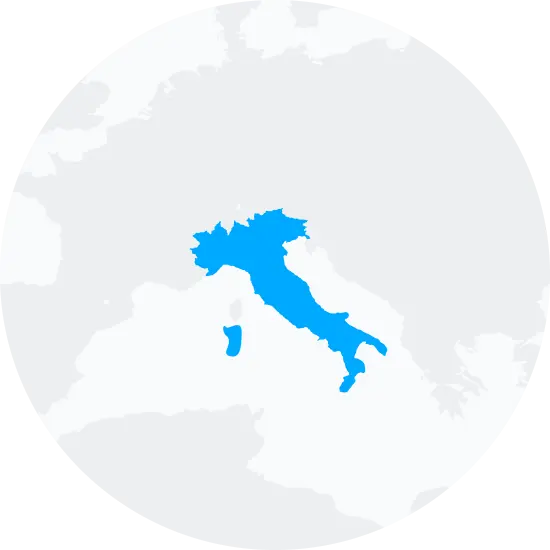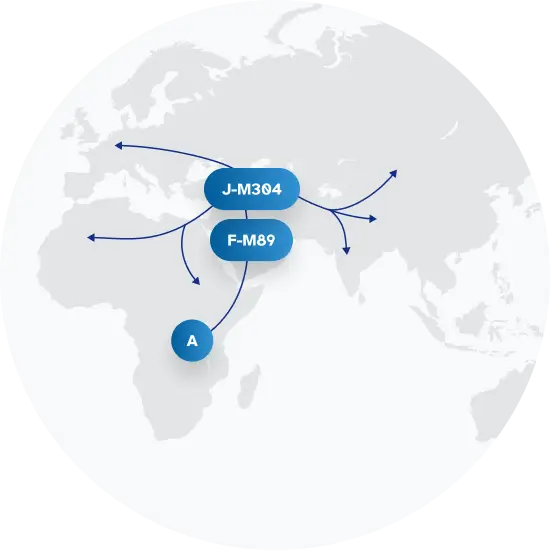Explore the Family Name Porto
How common is the last name Porto in the United States?
Based on the Decennial U.S. Census data, the surname Porto has seen a marked increase in its popularity from 2000 to 2010. In 2000, Porto ranked 10,634th in popularity among all surnames, with a count of 2,764 occurrences. By 2010, the rank had risen to 9,234, signifying an increase in popularity by 13.17%. The count of people carrying the surname also saw a substantial growth of 27.57% to 3,526. Reflecting this rise, the proportion of Portos per 100,000 people increased from 1.02 to 1.2, a jump of 17.65%.
| 2000 | 2010 | Change | |
|---|---|---|---|
| Rank | #10,634 | #9,234 | 13.17% |
| Count | 2,764 | 3,526 | 27.57% |
| Proportion per 100k | 1.02 | 1.2 | 17.65% |
Race and Ethnicity of people with the last name Porto
Looking at the ethnic identity associated with the surname Porto, the Decennial U.S. Census data shows diverse affiliations. In 2000, the majority of individuals with the surname identified as White (75.25%), followed by Hispanic (20.55%). Smaller percentages were linked to Asian/Pacific Islander (1.56%), Two or more races (1.99%), Black (0.47%), and American Indian and Alaskan Native (0.18%). By 2010, while Whites still comprised the largest group, their percentage had slightly dropped to 72.94%. Meanwhile, there was an increase in the percentage of Hispanics (23.43%) and Blacks (0.99%). The proportion of Asian/Pacific Islanders and American Indians and Alaskan Natives also saw marginal increases to 1.82% and 0.23% respectively. However, the percentage identifying with two or more races decreased significantly to just 0.60%.
| 2000 | 2010 | Change | |
|---|---|---|---|
| White | 75.25% | 72.94% | -3.07% |
| Hispanic | 20.55% | 23.43% | 14.01% |
| Asian/Pacific Islander | 1.56% | 1.82% | 16.67% |
| Black | 0.47% | 0.99% | 110.64% |
| Two or More Races | 1.99% | 0.6% | -69.85% |
| American Indian and Alaskan Native | 0.18% | 0.23% | 27.78% |
Porto ancestry composition
23andMe computes an ancestry breakdown for each customer. People may have ancestry from just one population or they may have ancestry from several populations. The most commonly-observed ancestry found in people with the surname Porto is Italian, which comprises 26.0% of all ancestry found in people with the surname. The next two most common ancestries are Spanish & Portuguese (25.3%) and British & Irish (16.1%). Additional ancestries include French & German, Eastern European, Indigenous American, Levantine, and Scandinavian.
Ready to learn more about your ancestry? Get the most comprehensive ancestry breakdown on the market by taking our DNA test. Shop 23andMe
| ANCESTRY BREAKDOWN | COMPOSITION |
|---|---|
| Italian | 26.0% |
| Spanish & Portuguese | 25.3% |
| British & Irish | 16.1% |
| Other | 32.6% |

Possible origins of the surname Porto
Your DNA provides clues about where your recent ancestors may have lived. Having many distant relatives in the same location suggests that you may all share common ancestry there. Locations with many distant relatives can also be places where people have migrated recently, such as large cities. If a large number of individuals who share your surname have distant relatives in a specific area, it could indicate a connection between your surname and that location, stemming from either recent ancestral ties or migration.
Based on 23andMe data, people with last name Porto have recent ancestry locations spanning a few countries, mostly in Italy, and the United Kingdom of Great Britain and Northern Ireland.
| RECENT ANCESTRY Location | Percentage |
|---|---|
| Sicily, Italy | 37.30% |
| Greater London, United Kingdom | 34.50% |
| Glasgow City, United Kingdom | 34.50% |
| Belfast, United Kingdom | 34.50% |
| Calabria, Italy | 34.50% |
What Porto haplogroups can tell you
Haplogroups are genetic population groups that share a common ancestor on either your paternal or maternal line. These paternal and maternal haplogroups shed light on your genetic ancestry and help tell the story of your family.
The top paternal haplogroup of people with the surname Porto is J-M67, which is predominantly found among people with European ancestry. Haplogroup J-M67 is descended from haplogroup J-M304. Other common haplogroups include R-P312 and R-L48, which are predominantly found among people with European and European ancestry. Other surnames with similar common haplogroups are: Vassallo, Piazza, Laroche, Lavin, Trujillo, Cota, Deangelo, Pickens, Hessler, Godinez.
The most common maternal haplogroups of people with Porto surname are: A2, H1, H. These most commonly trace back to individuals of European ancestry.
 Paternal Haplogroup Origins J-M304
Paternal Haplogroup Origins J-M304Your maternal lineage may be linked to Marie Antoinette
Because it is so dominant in the general European population, haplogroup H also appears quite frequently in the continent's royal houses. Marie Antoinette, an Austrian Hapsburg who married into the French royal family, inherited the haplogroup from her maternal ancestors. So did Prince Philip, Duke of Edinburgh, whose recorded genealogy traces his female line to Bavaria. Scientists also discovered that famed 16th century astronomer Nicolaus Copernicus traced his maternal lineages to haplogroup H.

What do people with the surname Porto have in common?
Spoiler alert: it's complicated. People with the same last name are usually no more genetically similar than a randomly sampled group of people from the same population. That said, people with the same surname are more likely to have similar ancestries than randomly sampled individuals. The reason is the tendency of people with similar cultural or geographical backgrounds to preferentially mate with one another. That's why people who share a surname may be more likely to share traits and tendencies in common than people within the general population. Check out the percentages below to see the prevalences of tastes, habits, and traits of people with your surname compared with prevalences among 23andMe users.
Preferences
Traits
Habits
Wellness

Migraine
A severe headache characterized by intense pain, sensitivity to light and sound, and often accompanied by nausea and vomiting.
"Porto" Surname 14.9%
23andMe Users 16.4%
Are health conditions linked to the last name Porto?
The short answer is that, if there is an association between surname and health, it's usually more about your ancestry than your name. Individuals with a given surname are no more genetically similar than the general population but often have similar ancestries. The populations of people associated with those shared ancestries often have sets of genetic variations, also known as alleles, in common. Some of those alleles are associated with a greater likelihood of developing certain diseases.
Disease variant frequency by ancestry
Disease allele frequencies in populations associated with the surname Porto are shown below. Important Note: not everyone with a disease allele will develop these health condition











